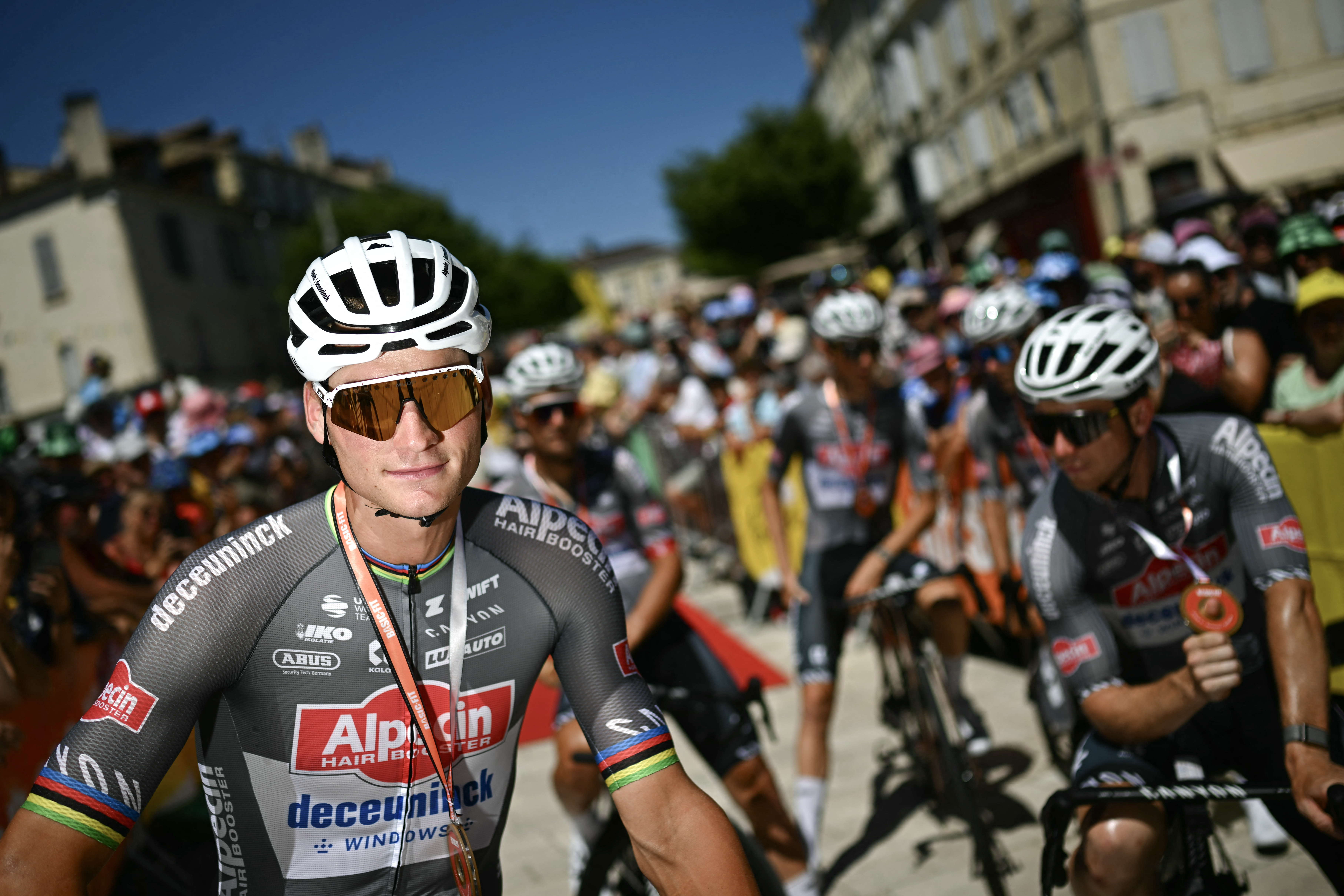Best commuter bike helmets: Safe and stylish options for getting to and from work
The best commuter bike helmets with features designed for comfortable, safe urban riding
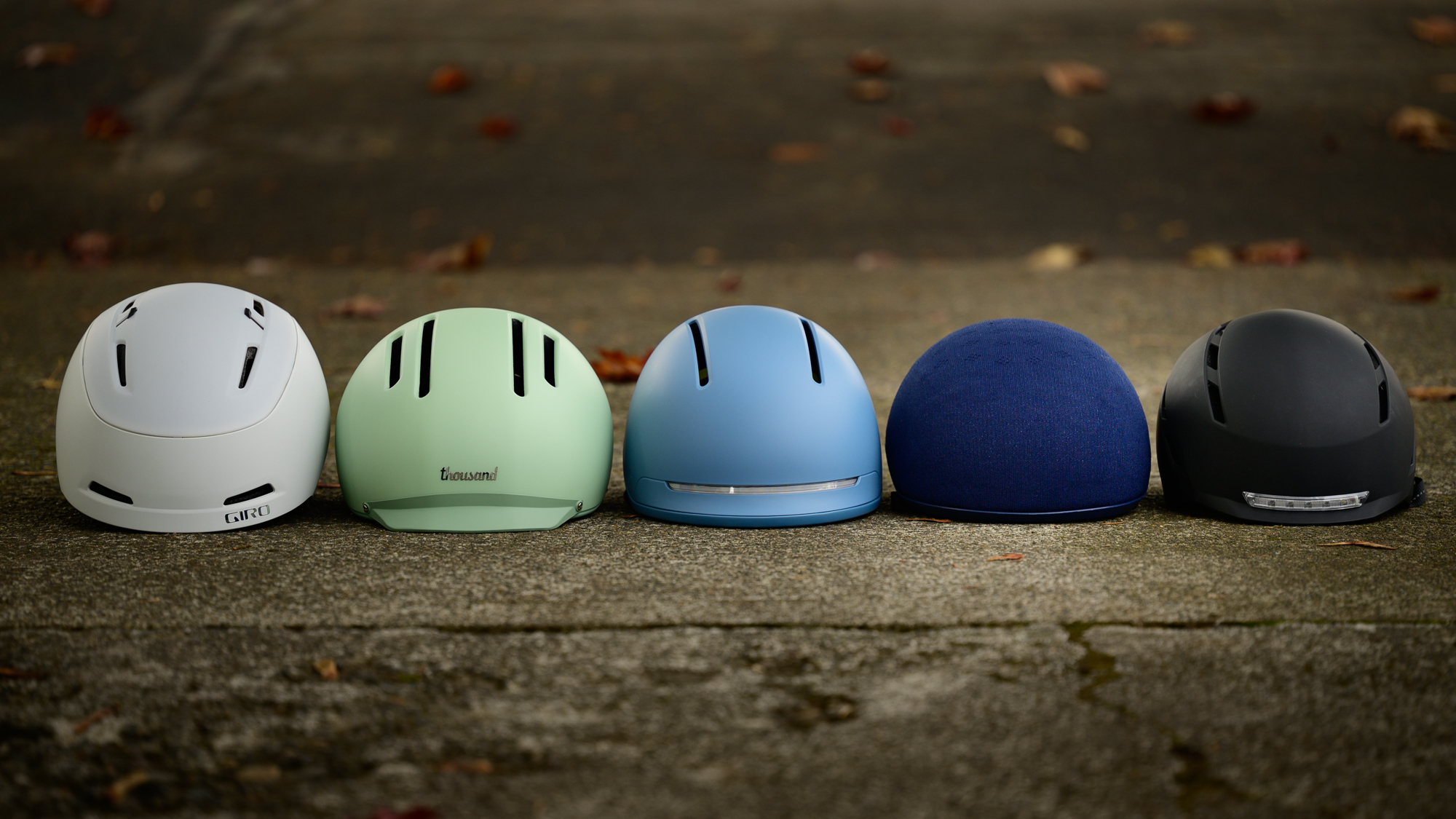
The best commuter bike helmets aren't completely different from other helmets. After all, any bike helmet you buy has to pass rigorous safety tests for the location you buy it.
That means the biggest difference when you look at this list is that there's a certain style that works with commuter bikes, with a more enclosed design than the best budget bike helmets for recreational road use, although these will serve just as well functionally.
Commuter bike helmet style isn't purely non-functional though. Helmets designed to commute day in and day out work better with the more upright style hybrid bikes that see frequent use as commuter options. Commuter bike helmets often get additional lighting to add passive safety in high-traffic and low-light situations. These wouldn't be a substitute for proper lights chosen from our list of the best bike lights, however.
Many include rotation safety tech such as MIPS for additional impact protection, while for many the quality of protection has been independently tested by the Virginia Tech helmet lab. You can read more on both in our How to Choose section and FAQs at the bottom of the page.
If all that sounds like just the ticket for your daily bike commute, keep reading for our pick of the best commuter bike helmets available today.
Quick list
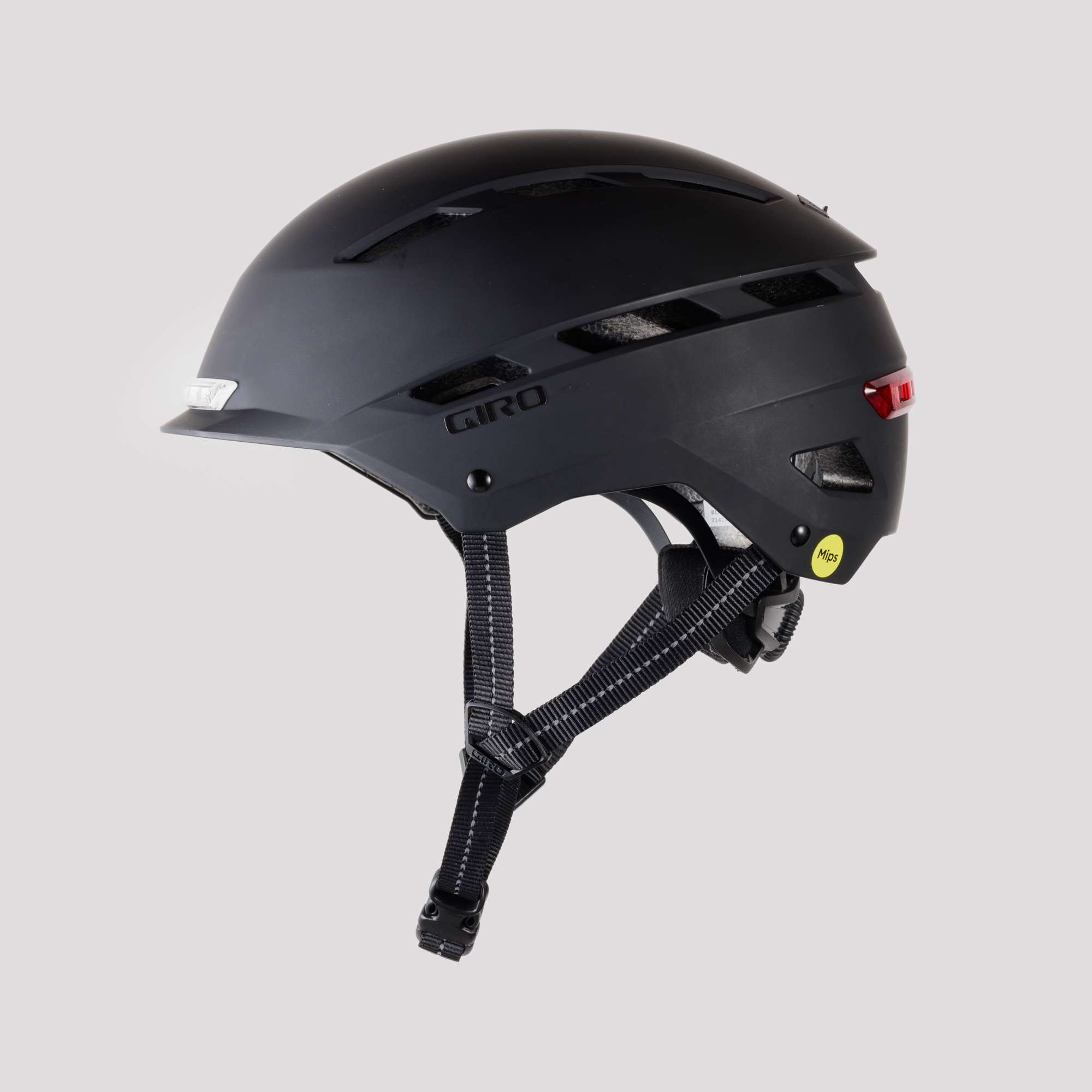
A reasonably priced helmet with a classic commuter style, integrated front and rear lights, and a comfortable fit.
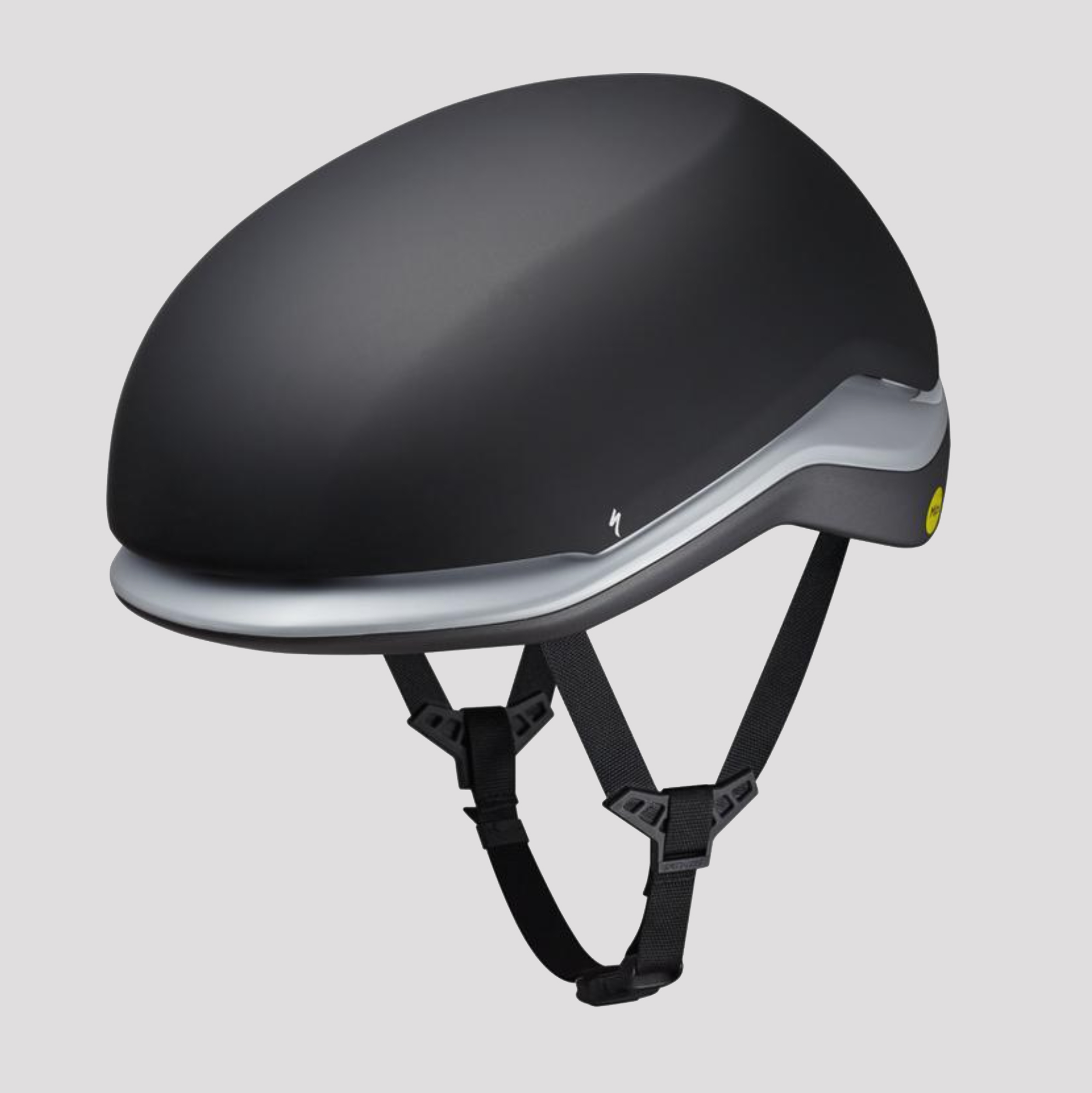
Leaving off the integrated lights drops the price but leaves a comfortable helmet that still looks great.
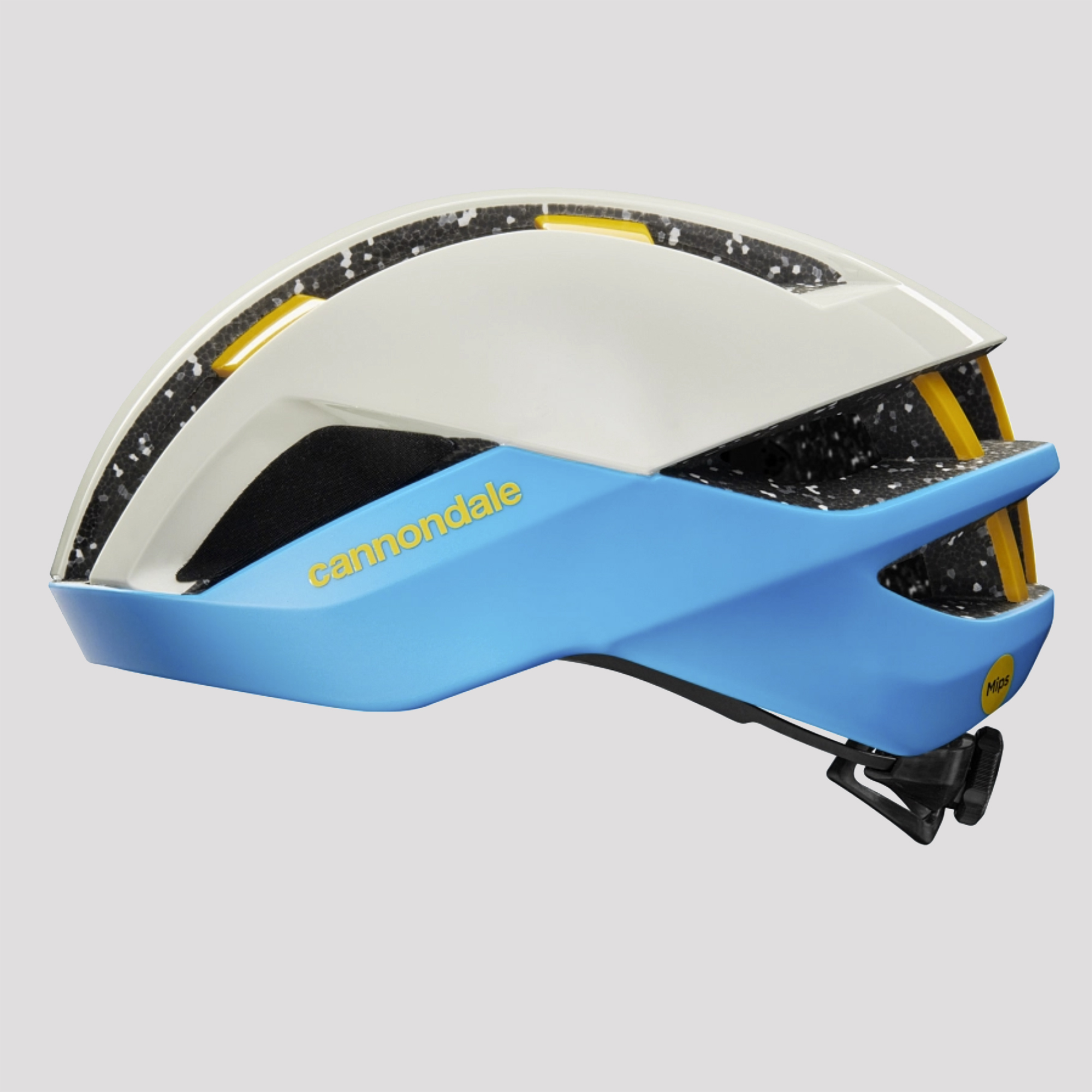
A quality road bike helmet that offers all the features needed for whatever kind of bike you choose to take to work and back.
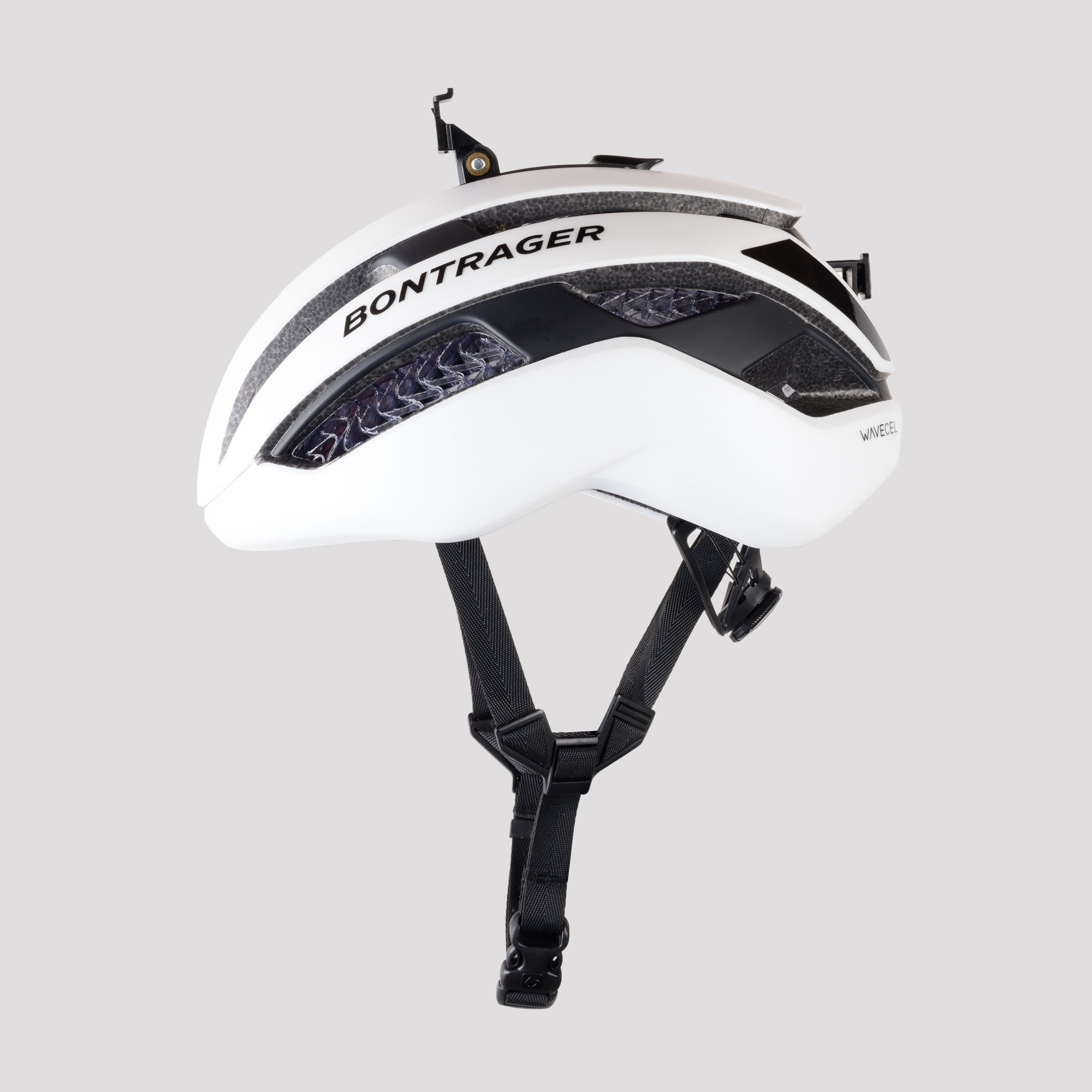
Road bike style and removable magnetic light mounts plus a ton of space in the rear cradle for long hair.
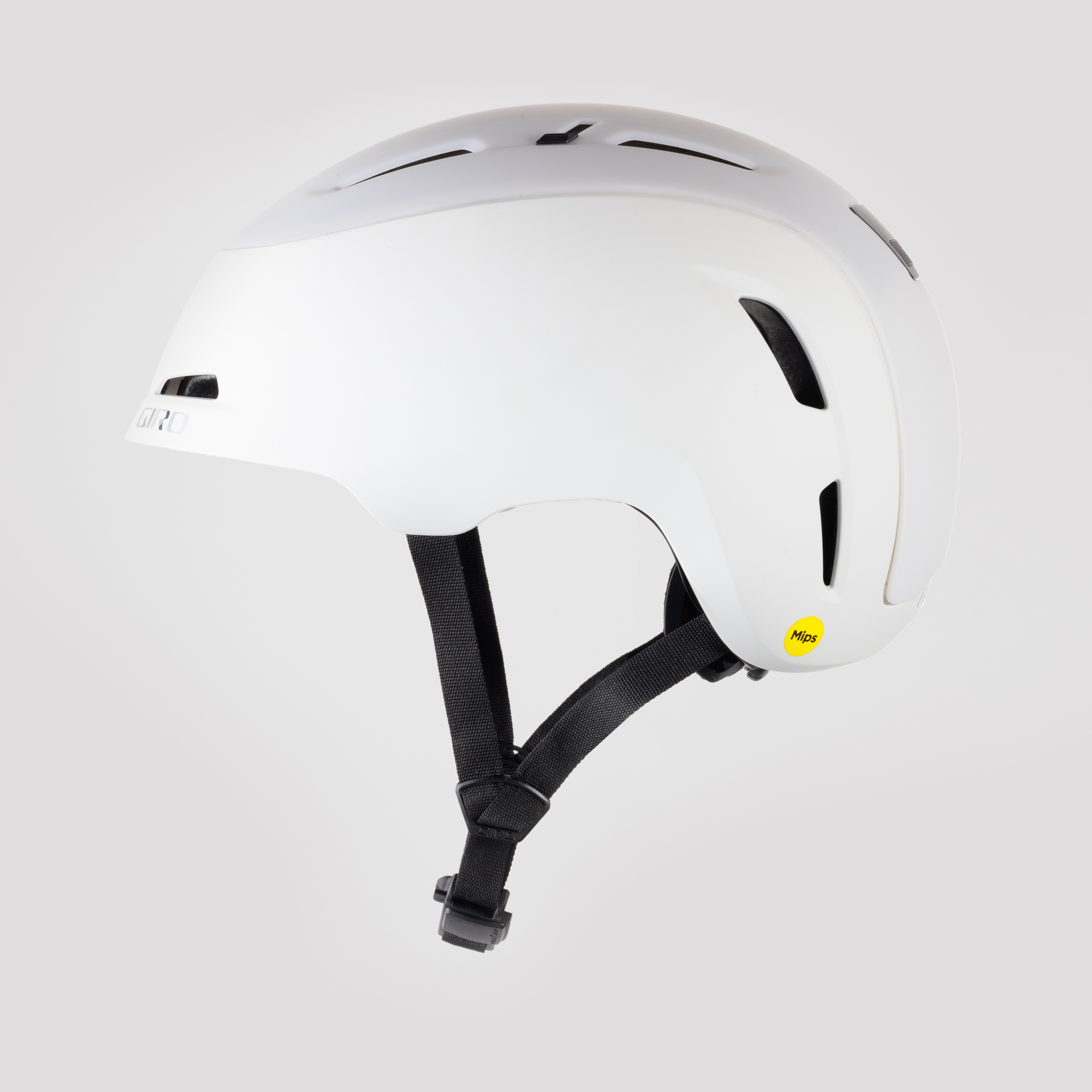
NTA 8776 certification adds more coverage and a higher drop test rating plus there’s a big rear light and upper vents you can close.
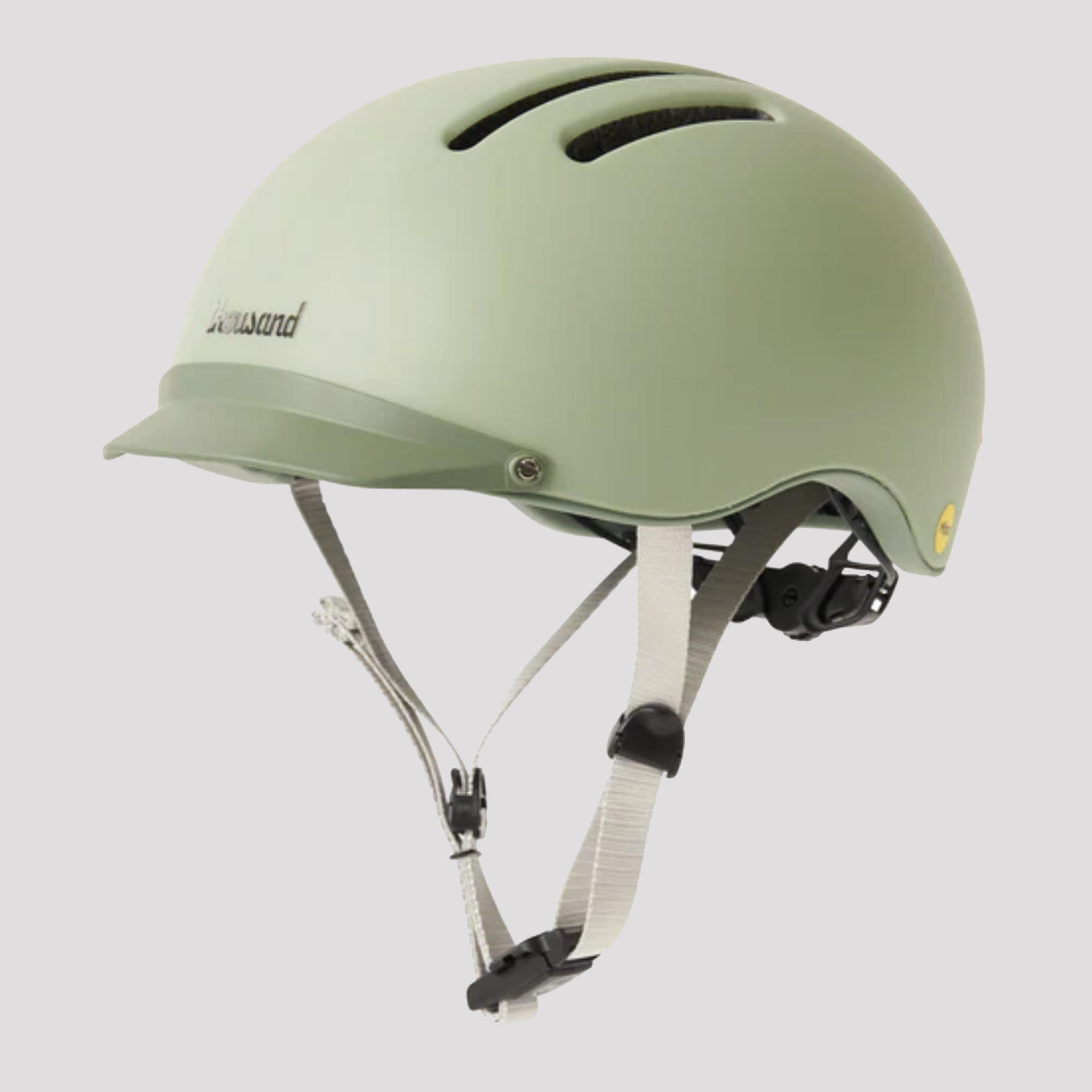
A stylish helmet with an included light, a visor you can swap, and a place to thread a lock through when you park your bike.
Last updated on 12th August 2025
We regularly review our buyer's guides and update them if a relevant new product is launched, an existing product becomes obsolete, or our testing reveals a new contender for inclusion. All of the best commuter bike helmets listed below are still available and the most up-to-date models as of August 2025. Also added helmet laws and certification section to FAQs.
Best commuter bike helmets available today
You can trust Cyclingnews
Best overall
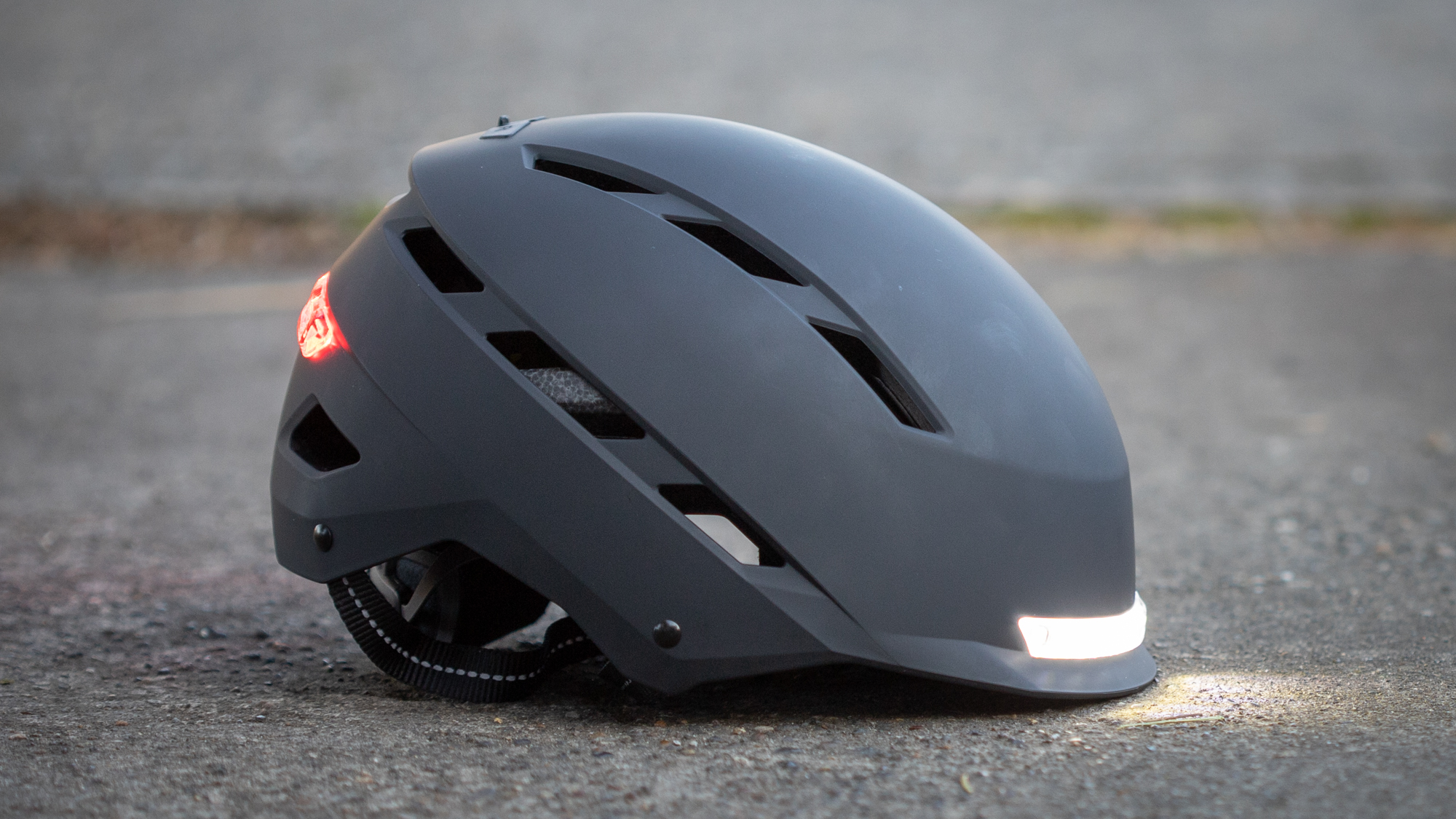
Specifications
Reasons to buy
Reasons to avoid
✅ You want integrated lights: The Giro Escape MIPS has both front and rear lights built in.
✅ You want a stable helmet: The Escape fits well without too much movement.
❌ You want a lower weight: Giro's helmet has a claimed 490g weight in size M.
❌ You want USB-C charging: The Escape MIPS is charged via a Micro USB cable.
When I consider what the ideal commuter helmet is, I picture the Giro Escape MIPS. The helmet isn't the cheapest on the market but it's also not the most expensive. At the same time, it's got style in spades but not at the expense of quality features. It's a perfect balance of style, features, and price.
What I mean when I mention features is primarily lights. At the rear of the helmet is a charging port and on either side there is a power button for the integrated front and rear lights. I've found that the battery lasts a long time and you can decide if you'd prefer flashing or solid lighting. Keep in mind though that you will have to dig out an old-style USB cable when it’s time to charge. It’s not the end of the world but this helmet was new right before most accessories made the switch and now it’s an outlier.
That small issue aside, the Giro Escape MIPS is not just stylish but also really comfortable. Put it on and it feels incredible. Giro does a great job with the padding on this helmet and it’s very stable. It's definitely on the heavy side but there’s plenty of coverage front and rear with a solid structural peak/brim that helps keep your face safe in a crash.
Read more details in our Giro Escape MIPS commuter helmet review.
Best budget helmet
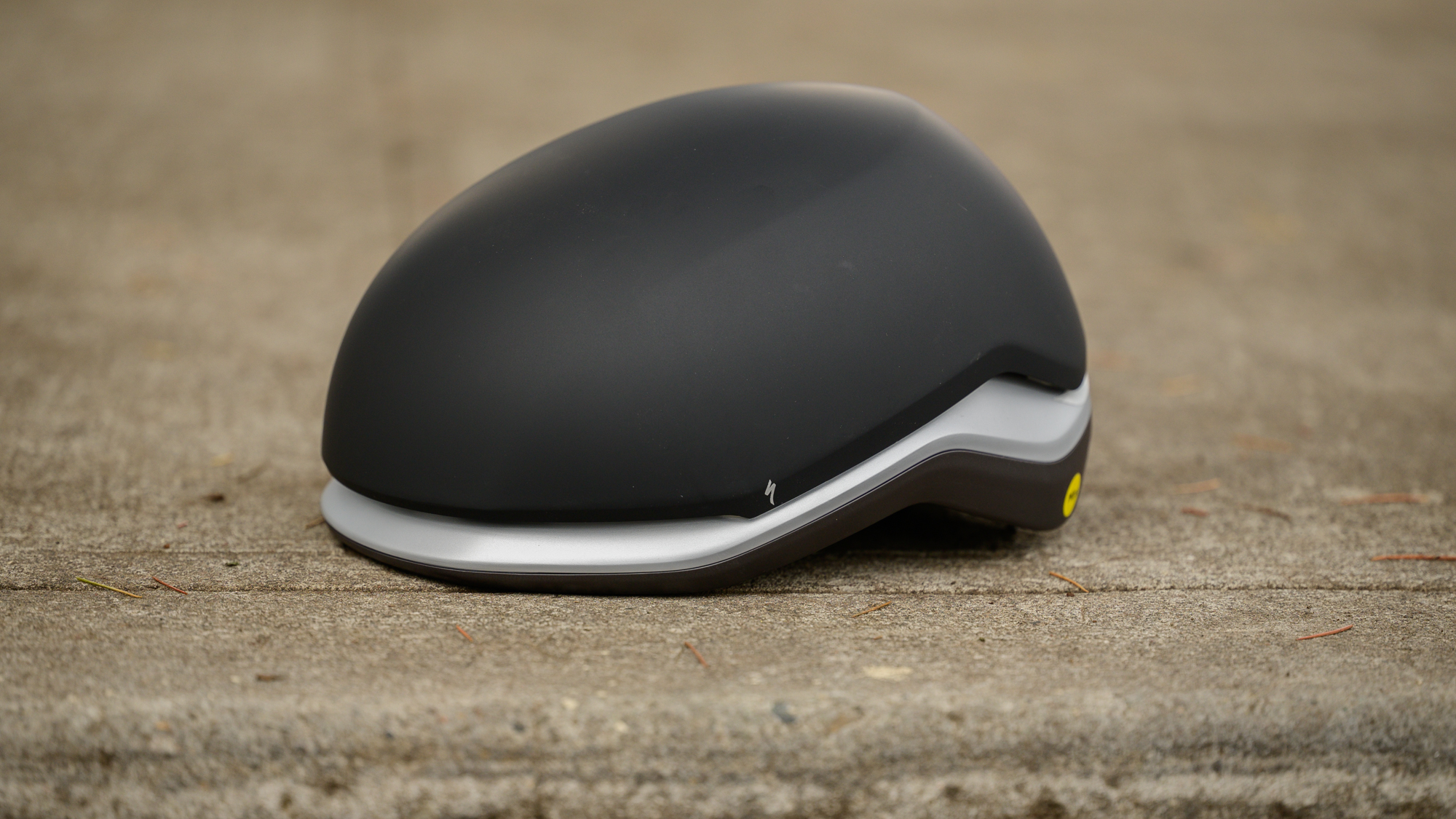
2. Specialized Mode
Specifications
Reasons to buy
Reasons to avoid
✅ You want a high safety rating: The Mode helmet scores well in Virginia Tech's testing.
✅ You want a well-priced helmet: Specialized's Mode helmet is less expensive than other comparative options.
❌ You want a lower profile liner: Hair can catch on the MIPS liner.
❌ You want more mark resistance: The Mode scratches easily and shows fingerprints.
Compared to the Giro Escape, the Specialized Mode takes a different approach to lighting. You can add it if you want. If that's your preference, you will find a special adapter in the box. Clip it to the rear and it allows you to add a Specialized Stix light, which we have listed in our best budget bike lights buyers guide, to the rear of the helmet. If you don't think it's necessary, the outside remains a simple, clean, expanse of a solid colour. I've found it does show fingerprints and pick up scratches though so you'll want to take care with it. The only thing breaking it up is the rim around the helmet which is also venting to help keep you cool even when it's hot.
On the inside of the helmet is where you'll find a MIPS liner. It is the older style so it's more obvious and can sometimes catch on longer hair. The MIPS liner is also paired with the Dutch NTA 8776 e-bike certification which means more coverage and passing higher drop tests. Together these two technologies come together to make for an impressive #6 Virginia Tech rating which is always nice to see.
Overall this is a quality helmet with lots of style and a great price. The Giro Escape adds features but also lacks Virginia Tech testing and costs more.
Best for road bike style
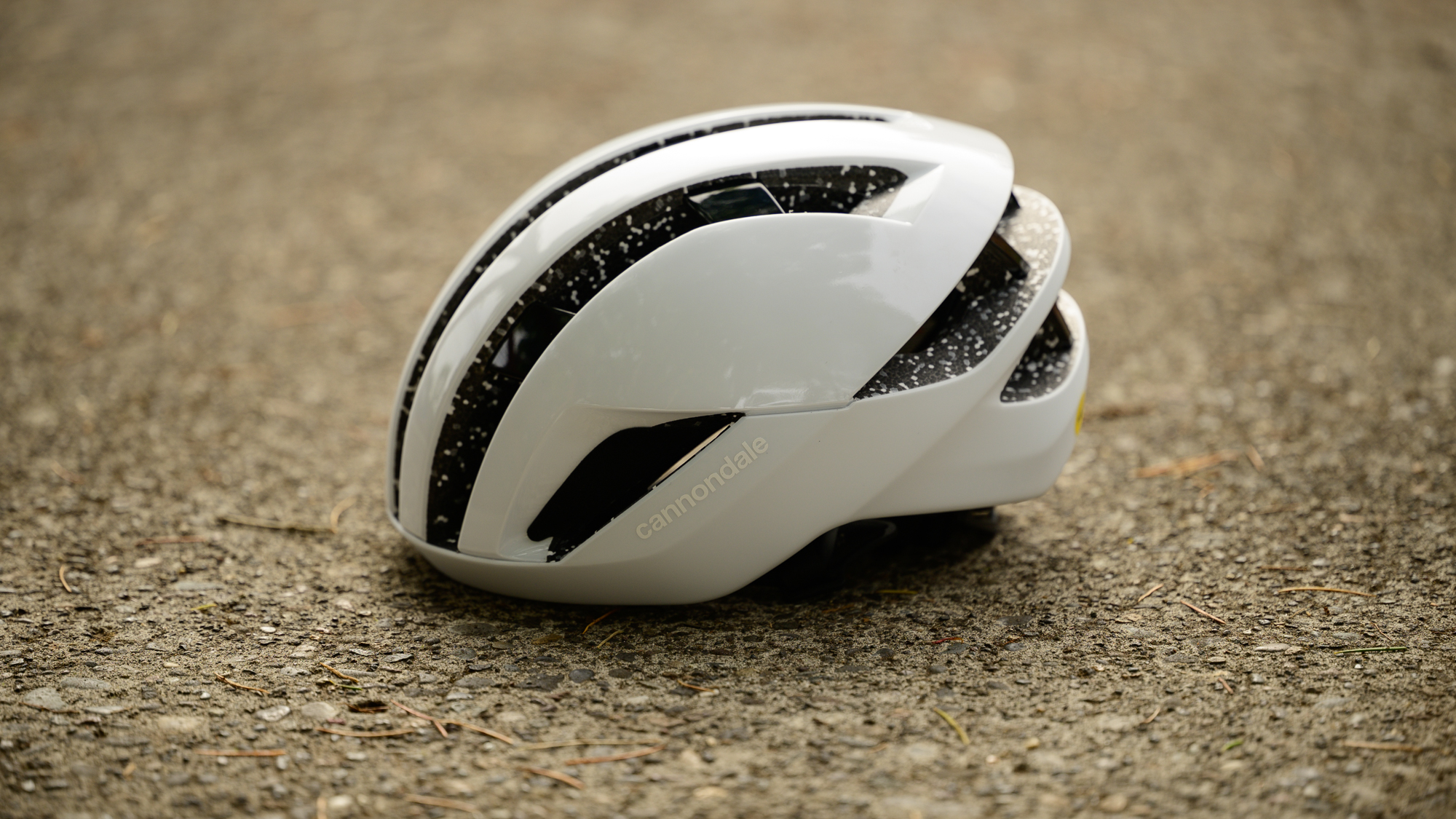
3. Cannondale Dynam
Specifications
Reasons to buy
Reasons to avoid
✅ You want roadie style: The vented design is good for hot rides.
✅ You want a low-profile MIPS liner: The Dynam's MIPS Air Node looks like normal padding.
❌ You want commuter style: The Dynam may not suit a commuter bike style-wise.
❌ You want a tested helmet: The Dynam hasn't been independently tested, although MIPS helmets generally score well.
The Cannondale Dynam is a road bike helmet. It wouldn't be completely out of line to see it show up on something like our best road bike helmets list. It makes this list of commuter bike helmets though because it has a style that lends itself to stretching anywhere between fast road bike and flat bar commuter.
The fact that the Dynam focuses on road bikes riding means that compared to many commuter helmets, it's highly ventilated. There are big strips of open area on the helmet and extensive exhaust ports as well. The MIPS Air liner only helps with this by being completely integrated into what seems like standard padding. Unlike some helmets though, the MIPS Air padding is easy to remove and wash should you need to.
There is a downside to all that venting though and that is weight. While it's not heavy in the context of most commuter helmets, it's also not a featherweight road helmet. What it comes down to is that keeping the helmet structurally sound even with so much venting means adding a bit of extra weight. The magnetic buckle probably doesn't help that weight issue much either but I found it nice to have. On the upside, Cannondale includes a very nice helmet bag that should keep the exterior looking nice even when stuffed into another commuter bag while at work.
If you like a sportier commute, I reckon the Cannondale Dynam is going to be a good choice.
Best for long hair
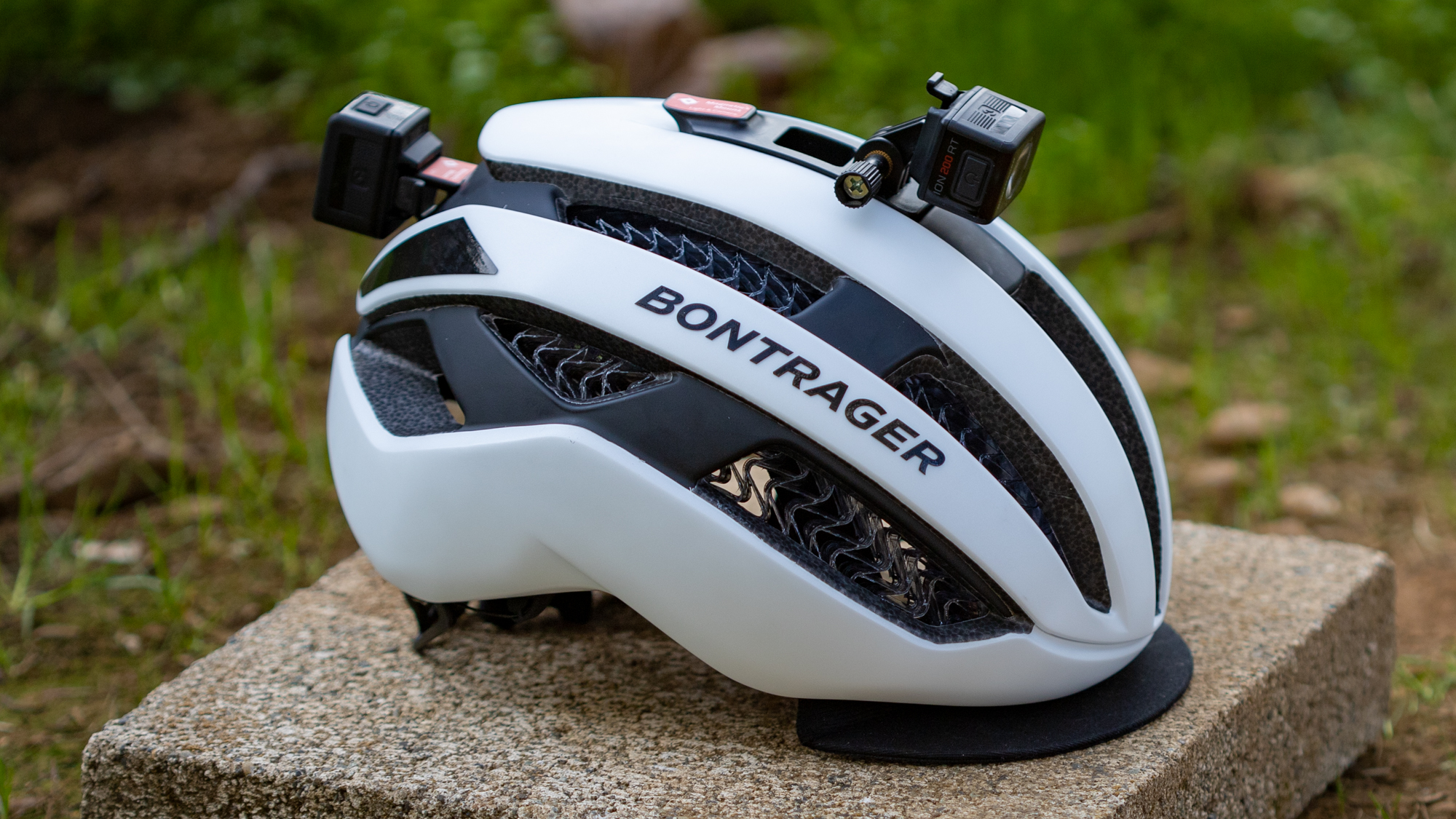
Specifications
Reasons to buy
Reasons to avoid
✅ You want a dual-duty helmet: The Circuit is good for leisure as well as commuting duties.
✅ You want long hair compatibility: The design is ponytail-friendly.
❌ You want easier lighting: Lights aren't in-built and are fiddly to add.
❌ You want MIPS: Wavecel replaces MIPS here, although there is a MIPS alternative.
I don't have long hair but as I've gone through this list, I found there's not a ton of good options for those who do. Helmets that come down farther on the edges of the head often leave little room for ponytails. Even when there is space, many helmets seem to inexplicably block space in the rear cradle to pass a ponytail through. The Bontrager Circuit Wavecel was the helmet I'd initially tagged as the best option with removable light mounts but when I checked the rear cradle, it's big and open. There's all the room in the world to pass long hair through the rear cradle on this helmet. It ended up being unique enough I wanted to highlight it.
Aside from the room in the rear cradle, what's unique about the Bontrager Circuit is the combination of innovative rotational tech and adaptability. For rotational safety, there's no MIPS here. The point of MIPS is to allow the helmet to rotate without hurting you. Bontrager instead builds that rotation right into the helmet with a material called Wavecel that will crush in a crash. It makes for better integration and a lighter helmet that has an easier time releasing heat. Unfortunately, it also means you can't reach your head if you have an itch.
The Bontrager Circuit Wavecel is also unique because it's very adaptable. It's not so different from the older Bontrager XXX road race helmet so if you want to use it on the weekend, it should work well with a fast bike. During the week, you can add the magnetic light mounts and a pair of Bontrager lights for front and rear visibility. The rear mount is a little fiddly but overall, it's a great option for every situation.
Bontrager/Trek also sells the Circuit helmet with MIPS in place of Wavecel impact protection, although this reduces the helmet's Virginia Tech ranking from 5* to 4*.
You can find more details in our full Bontrager Circuit Wavecel review.
Best with e-bike certification
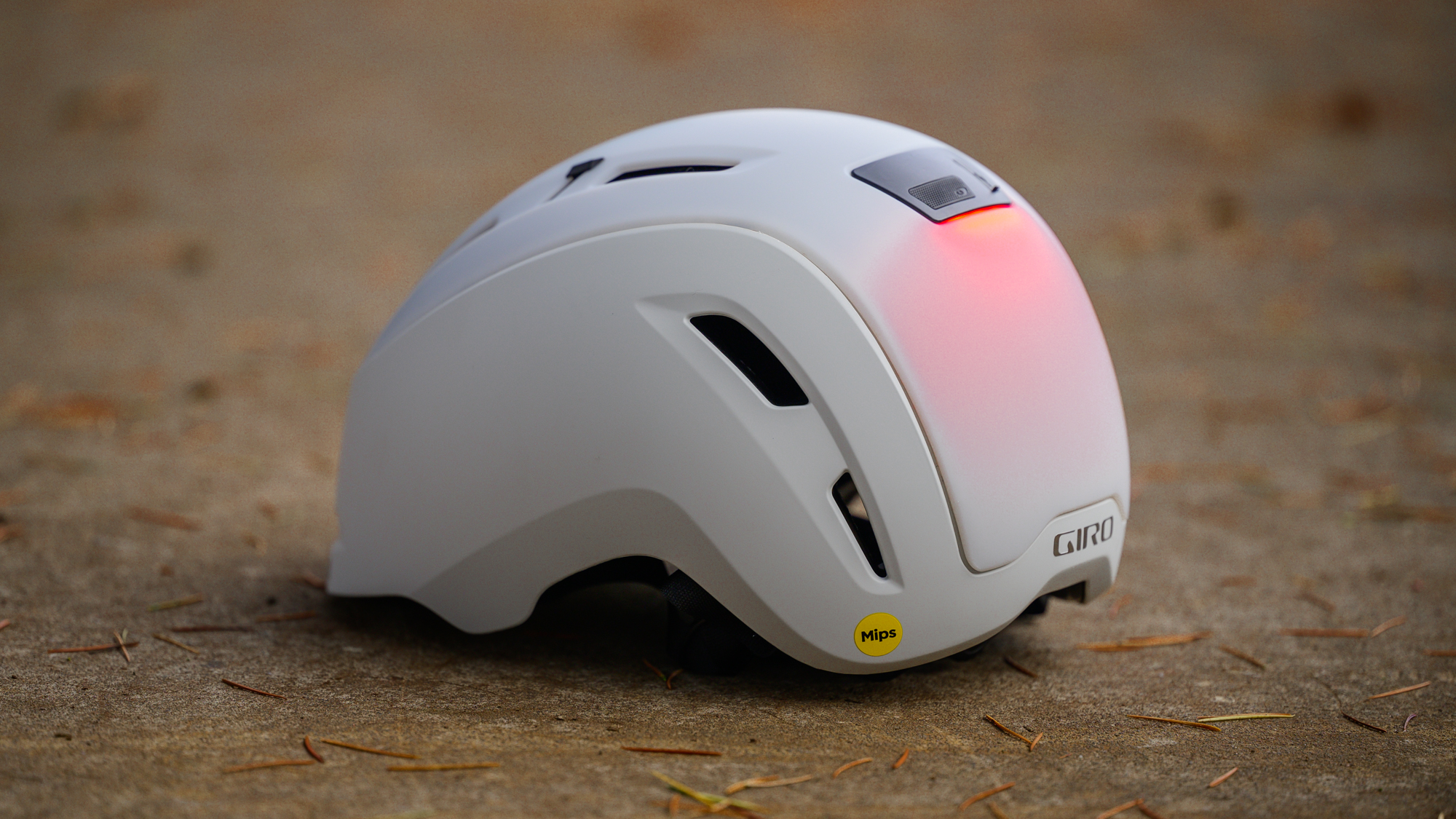
5. Giro Camden MIPS
Specifications
Reasons to buy
Reasons to avoid
✅ You want e-bike certification: The Camden MIPS is one of two helmets in this guide with the Dutch NTA 8776 certification for e-bike use.
✅ You want closable vents: Close the top vents for less airflow if it's cold or wet.
❌ You want USB-C charging: The Camden is another Giro helmet with Micro-USB charging.
❌ You want lower weight: The Camden is another helmet that weighs almost half a kilo.
More and more, e-bikes are becoming the standard option for commuter bikes. We have a list of the best e-bike helmets but many of the options are on both lists. If you found yourself here and you are using an e-bike, it's probably worth checking that list out. If I have to pick only one though, it's the Giro Camden MIPS.
What I like about the Camden MIPS is the mix of e-bike-specific certification and features for everyone. You don't have to have any special certification for an e-bike helmet but the Dutch NTA 8776 certification mandates more coverage and passing a higher drop test. For those using US-style Class III e-bikes at 28mph, that seems like a reasonable thing to have.
The Giro Camden MIPS starts with that certification and then adds more features. At the rear is a big light. It's not as bright or configurable as the Unit1 helmet but it gets the job done. At the front you'll find an integrated brim and up top are vents you can close when it's cold. There's also a magnetic buckle to make putting the helmet on and taking off easy. It ends up being a really great feeling helmet to wear.
Downsides include the use of the older USB standard plus a bit of extra weight. If those seem like small details, they are. This is a comfortable helmet that is a great option for commuting of any kind, especially if you use an e-bike.
Best for locking up
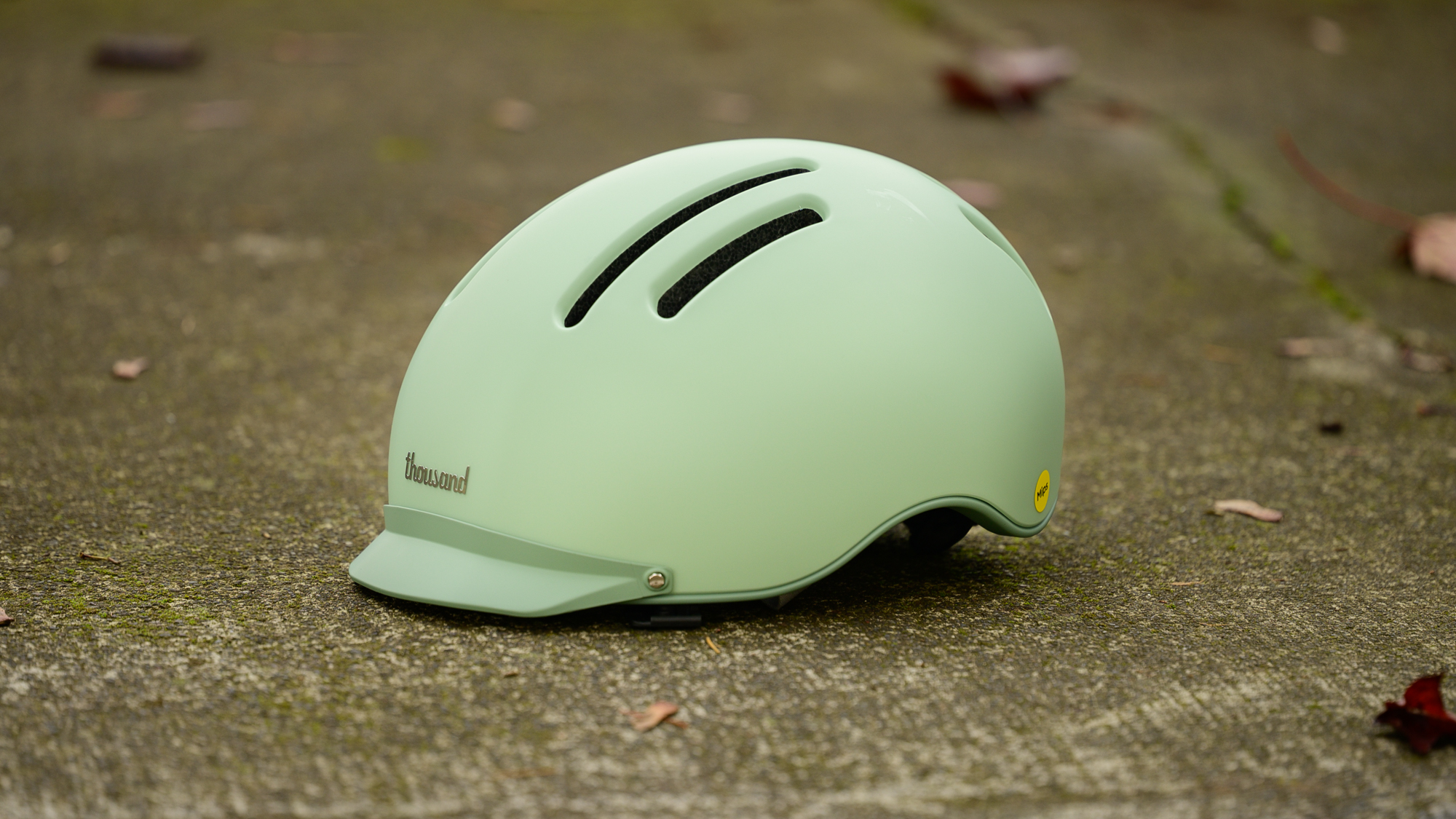
6. Thousand Chapter MIPS
Specifications
Reasons to buy
Reasons to avoid
✅ You want to lock your helmet to your bike: The Chapter MIPS has a built-in anchor for a lock.
✅ You want automatic lights-on: An ambient light sensor turns on the rear light when it gets dark.
❌ You want more airflow: The Chapter MIPS lacks front vents.
❌ You prioritise function over form: Thousand helmets may be a little too fashion-forward still.
Thousand helmets was far more fashion than function at one point but the brand has completely left that persona behind. Today, Thousand makes a whole range of bike accessories that are fashion-forward but also well-thought-out and a joy to use. The Chapter MIPS is the helmet that Thousand makes specifically for daily commuting needs.
As mentioned, Thousand is a fashion-forward brand. That means that even the brand's most function-forward product is still very fashionable. There are eight different colour options and each one comes with a matching removable visor. Thousand also sells the visors on their own though and you can mix and match with six visor options.
As much as I'm a fan of fashion though, Thousand is still coming close to focusing a bit too much. There's good air movement from your forehead up and into the helmet. Still, on the hottest days, more air is always appreciated and openings at the front of the helmet would help even if they impacted the looks.
Whatever colour you pick, there's also an included rear light. It stays off normally but when the light gets low it automatically turns on. If you'd prefer to use it somewhere besides the helmet, Thousand also includes an adapter to mount the light on a bike. Of course, you may not need it on the bike as we've also included the Thousand Traveler lights on our list of best bike lights.
It's really not the lights or fashion that makes Thousand helmets unique though. From the beginning, the Thousand helmets have always had a provision for locking the helmet to a bike. The Chapter MIPS is no different. When you get to your destination you don't have to bring your helmet with you. Instead, just pop the cover off the side and thread your lock through the hole and now your helmet is as safe as your bike without having to carry extra bulk with you.
Best with bright lights
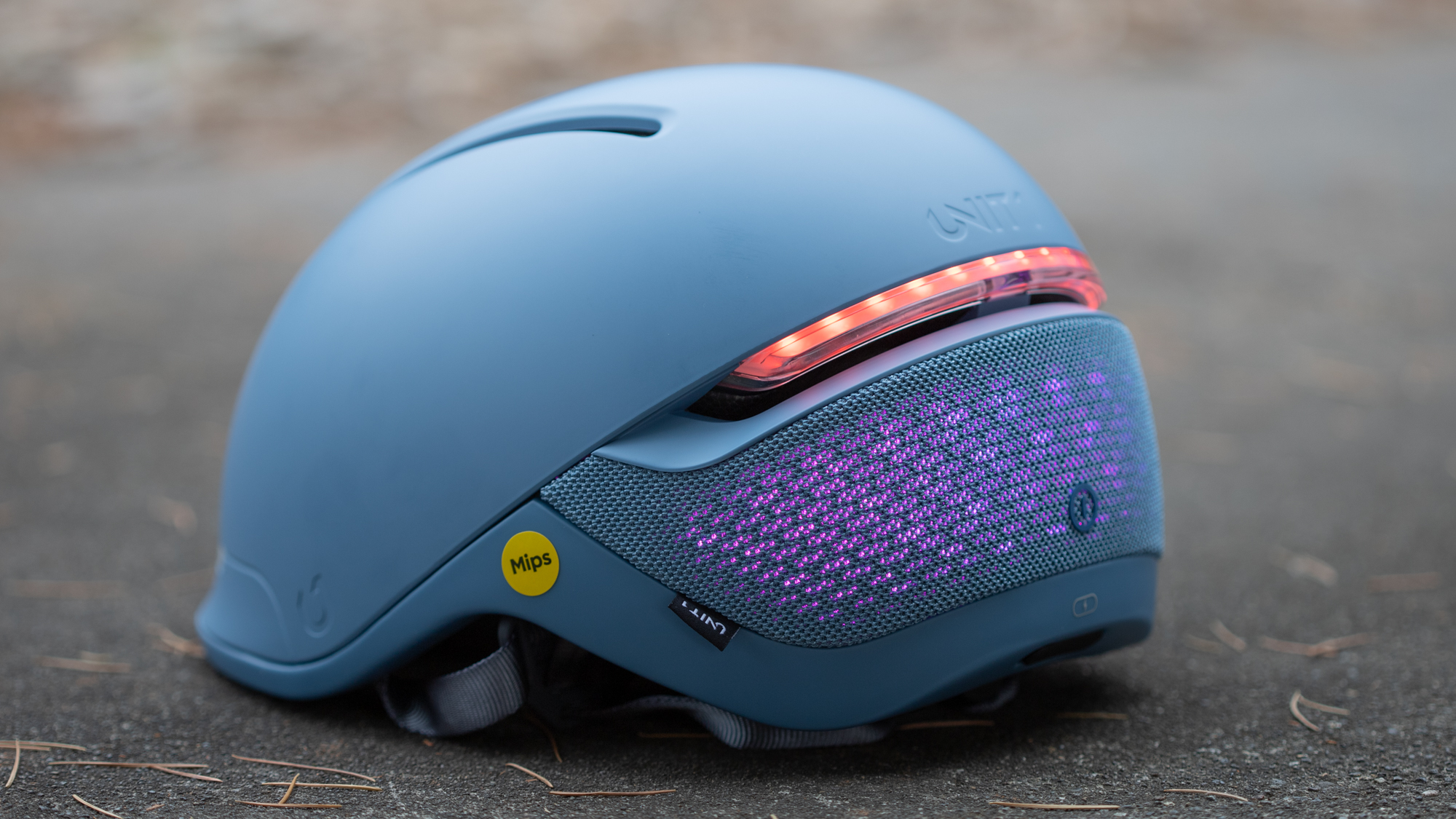
Specifications
Reasons to buy
Reasons to avoid
✅ You want maximum lighting: There's 500 lumens of total output from the front and rear lights.
✅ You want easy clip-in: The magnetic buckle is easier to use than a clip.
❌ You want easy cleaning: The fabric rear panel will be difficult to keep clean.
❌ You want less weight: At 580g, the Faro is a heavy helmet.
Often the lighting that's integrated into a helmet isn't that bright. The point is to add a bit of visibility but it's not meant to be truly eye-searing. Unit 1 is a bit different. The helmet includes a full 500 lumens of onboard lighting and there's both a front and rear LED strip plus a big, configurable via app, lighting matrix under the fabric at the rear of the helmet. When you slow down, sensors in the helmet know it and they signal that you are braking. You can also purchase optional bar-mounted turn signals to add even more visibility for other road users. Both pieces charge via USB-C and the helmet has an 1850 mAh battery with up to 10 hours of battery life depending on use.
When choosing a version of this helmet, you will find four colour options. Those colours grace an ABS outer shell which adds a bit of day-to-day resistance, plus the fabric rear. The fabric rear does include special coatings to resist water and stains but it is worth noting that it will never be as easy to keep clean as the rest of the helmet. Other features I like are the magnetic buckle that's easier to use than the normal clip and MIPS (though there's no Virginia Tech testing).
Also worth noting, all the built-in tech makes the Unit 1 Faro heavy at 580g. It's still well-balanced, has good ventilation and is comfortable to wear but it is on the heavier side.
Read our full review of the Unit 1 Faro commuter bike helmet for more info.
Best for gravel bike style
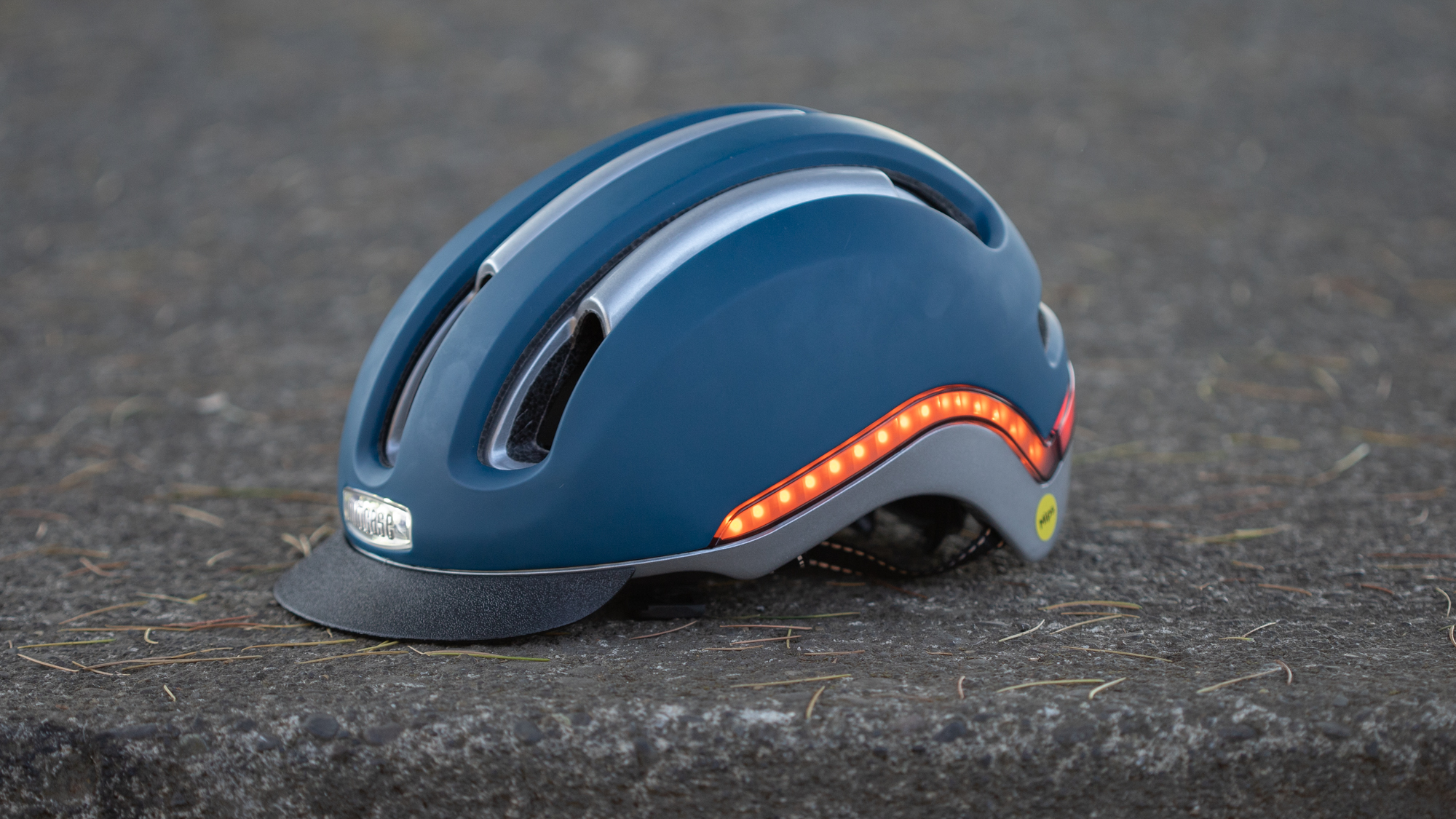
Specifications
Reasons to buy
Reasons to avoid
✅ You want a helmet to match a gravel bike: The Vio would work well on a gravel bike commute.
✅ You want plenty of colour choices: Nutcase sells the Vio in a good range of colours.
❌ You want more size range: With only two sizes and a non-adjustable cradle, the Vio may not fit all riders well.
❌ You want less venting: The Vio is quite open for a commuter helmet design.
Sportier commuting doesn't always mean a road bike. The best gravel bikes are also a bit more upright and way more versatile than the road bikes. That relaxed riding position and versatility makes them an excellent choice for commuter duties and if you want a helmet to match, then kid's brand Nutcase has an option. While you won't find wild designs as you do with the kids' helmets, the design of the Nutcase Vio lends itself to matching with a gravel bike and there are still lots of colours.
Style isn't all that the Nutcase Vio has going for it though. On top of style, it also includes plenty of venting and passive safety in the form of MIPS alongside a dual-density EPS foam liner. As with many of the best commuter helmets, the Nutcase Vio also includes integrated lighting. At the front, there is a strip of white lights and at the back, you'll find red. That's also standard but Nutcase takes it further with long strips of amber lights along each side.
The only thing you might need to watch out for is fit. There are only two sizes and there's no vertical adjustment to the rear cradle.
You can find more details in our full Nutcase Vio MIPS review.
Best for skate style
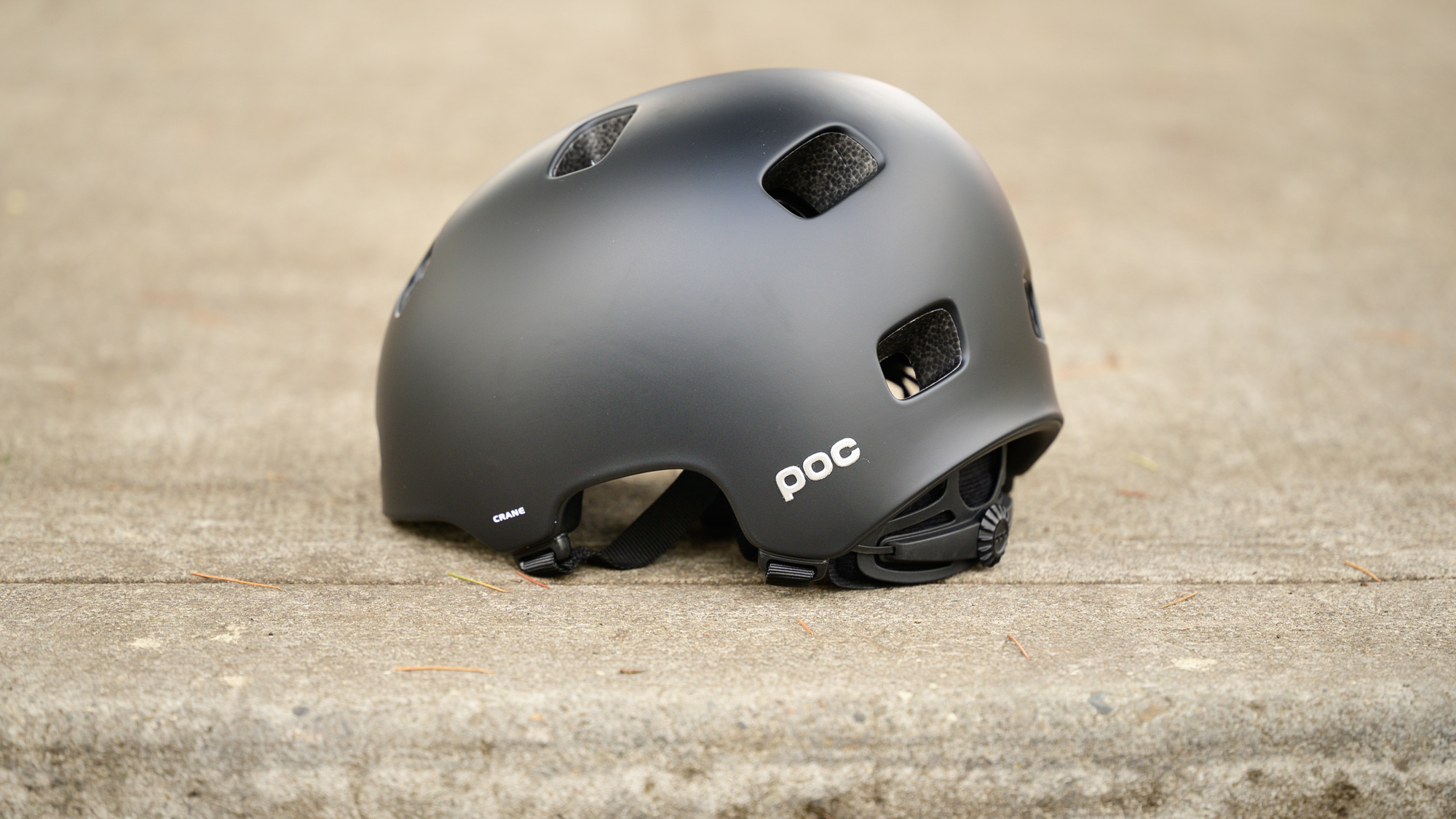
9. POC Crane MIPS
Specifications
Reasons to buy
Reasons to avoid
✅ You want skater style: POC's helmet wouldn't look out of place on a skateboarder.
✅ You want good venting: POC gives you efficient airflow for an urban style helmet.
❌ You want a smaller MIPS liner: The Crane uses a larger, older style MIPS liner.
❌ You want independent testing: Virginia Tech hasn't tested the Crane.
Style matters when picking a helmet. I covered options for sporty road bike commuters and options for those who want to take the gravel bike they commute with off-road on the weekend. If none of those are quite what you want, you might want an urban or skater-style helmet. There are a number of options along those lines that make sense but the POC Crane MIPS marries the style to thoughtful design touches.
While many cycling helmets use a lighter mould construction, the POC Crane MIPS aims to hold up. Despite that choice, at 411 grams for a size M/L POC has managed to keep the weight in check. That's not really the stand-out feature though. What makes the POC Crane MIPS a great choice for a skater-style helmet is how well it handles venting. Sticking to the skater style, there aren't huge strips of venting but rather large rounded squares. The two at the front, plus the rear exhaust vents, do a great job of keeping air moving through this helmet.
Although this is a great helmet, the one thing I’d love to see changed is the MIPS part of the helmet. While POC, and other brands, mostly moved past the first-generation MIPS with the large plastic inner, this helmet still uses it. It’s not a huge problem in a skate-style helmet as the liner mirrors the large blocky cuts of the outer. It still seems like a throwback to an older technology though.
One small note in terms of style, there’s also an included brim if you prefer something to help keep the sun or rain out of your eyes. To my eye the brim can shift from a skate style to an urban style so aside from function, there's a bit of form too.
Best for scratch resistance
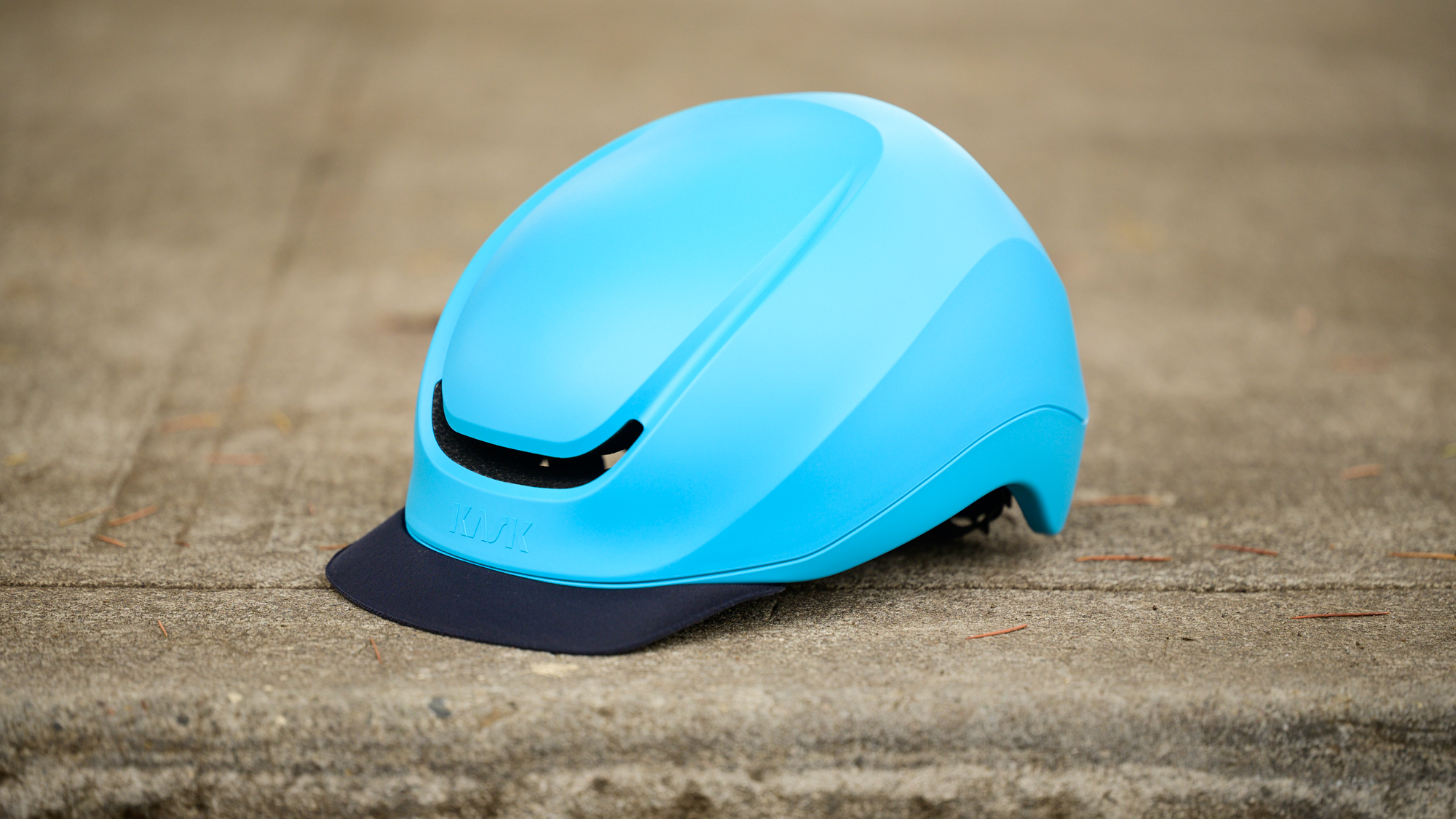
Specifications
Reasons to buy
Reasons to avoid
✅ You want a durable helmet: The Kask helmet is scratch-resistant.
✅ You want good internal airflow: Deep channels funnel air over your head.
❌ You want a smaller helmet: The Mobius smallest 55cm size won't suit smaller head sizes.
❌ You want MIPS: Kask doesn't include a MIPS liner.
Commuter helmets can take a beating. They get used every day and when you get to the office, you probably don't lovingly place them in some special place. They get dropped into a bag and bounce around all day. The nature of things is that a commuter helmet needs to be able to stand up to this kind of use and that's what the Kask Moebius excels at.
For the Moebius, Kask uses a scratch-resistant ABS outer. It's thick and it's textured so that even if it does pick up a scratch, it's less likely to be noticeable. There's also ten colours available so you can pick something to match or something to stand out. I've gone with a bright blue I think does a good job of being both stylish and bright.
The inside of the Moebius is also unique. The pads are low and have wide coverage but it's the space in between them I find most interesting. The outside of the helmet only has a front intake and rear exhaust but there's a clear path between them moulded into the helmet. While it might seem like there's not much venting, it works like an aero helmet and keeps air constantly moving. Then at the rear, the rear cradle threads into the straps so you can pull it down as far as you want. This is another helmet that will be a good choice for anyone with long hair.
Unfortunately as good as the helmet is, anyone with a small head will be out of luck. The smallest option is a size medium with a 55cm lower cut-off. There is also a light you can add but it’s not especially well integrated and instead works with double-sided tape.
If you want to hear more details, take a look at our full Kask Moebius review.
Best for sustainability
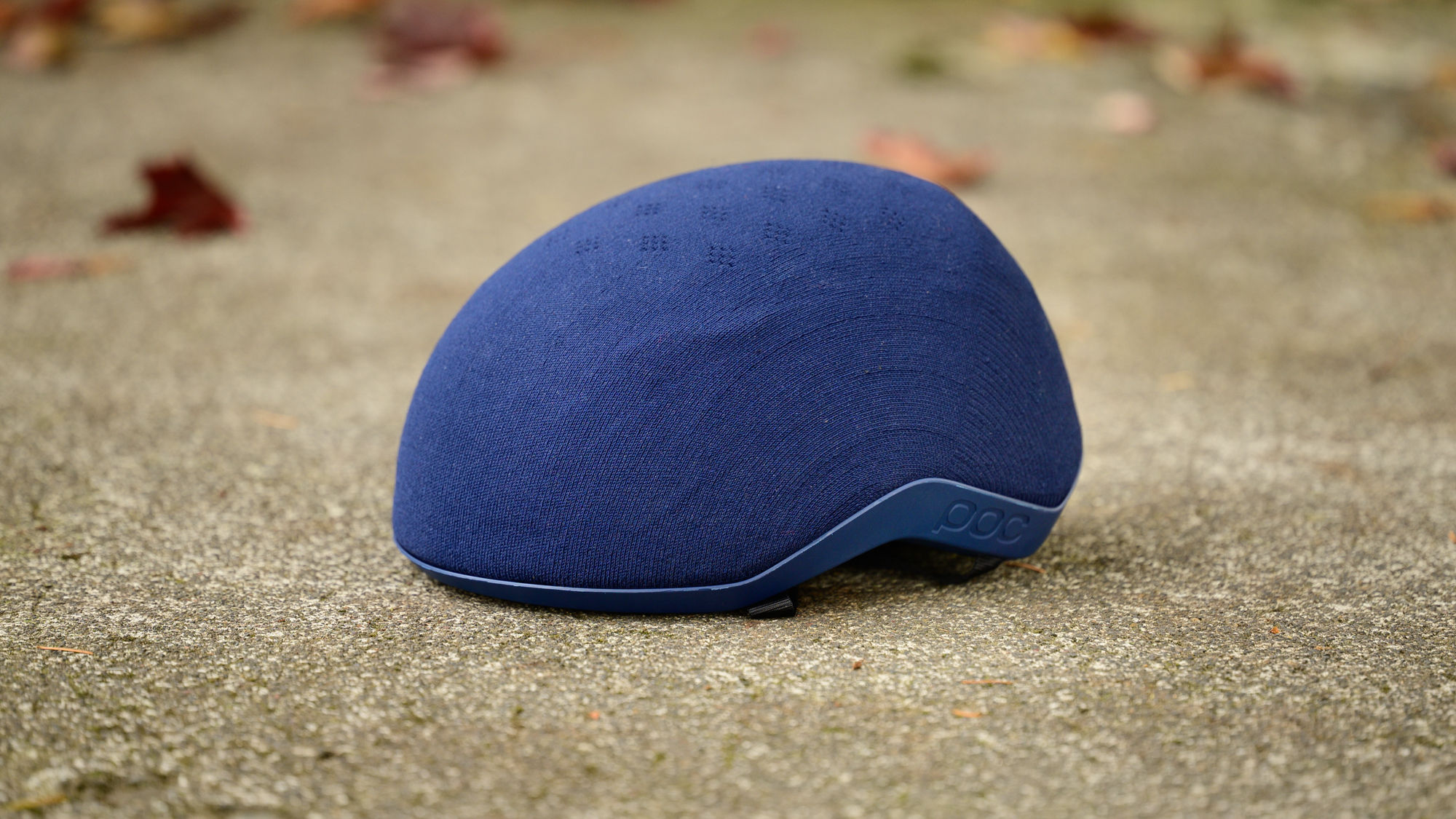
11. POC Myelin
Specifications
Reasons to buy
Reasons to avoid
✅ You want good venting: Although they're covered in cloth, the Myelin has plenty of vents.
✅ You want recyclability: The Myelin has been designed to be recyclable at the end of its life.
❌ You want rotational impact protection: There are no additional safety features such as MIPS.
❌ You want a test score: Virginia Tech hasn't tested the Myelin.
I like to drop the POC Myelin in every guide I have a chance to. Helmets are one of the least recyclable things that cyclists use. They are also items that periodically need replacement. In response, I've seen people use them as hanging planters but POC thought there might be another option.
The POC Myelin starts with a commuter outline covered by fabric in a solid colour. Underneath the fabric, though not visible, is a ton of venting. At the front of the helmet is an air intake to help push hot air out the vents. Then things depart from normal helmet design.
Every part of this helmet considers the end of life. That starts with using 50% recycled materials for the construction. Then POC puts the pieces together with no glue and without the use of laminated materials. The fabric outer isn't just for style, it's a way around the typical laminated construction of helmets. The point of all this is that when the helmet reaches the end of its life, you can take it apart. Each piece can go to the correct waste stream.
In exchange for all that consideration of end of life, there are some drawbacks. The Mylen doesn't have features like lights, it has no rotational impact protection technology, and it lacks a Virginia Tech score. I suspect POC will only continue to improve the details but this is where things are for now. If you care about sustainability, this is the helmet for you.
How to choose the best commuter bike helmet
Is it comfortable?
There's no substitute for trying a helmet on. The internal shapes of helmets differ and you may find that some helmets fit better than others, not to mention making sure that the sizing is correct.
A badly fitting helmet won't be able to protect your head properly, a helmet that fits properly should feel secure on your head without any pressure points or feeling overall tight.
Are the straps comfortable?
It's not just the helmet that needs to fit, check too that the helmet straps can be adjusted to give a firm, comfortable fit.
Does it feel heavy?
Helmets often feel weighty off the bike. You may not notice it when riding, although in our experience a helmet that's close to half a kilogram can feel bulky.
Does it feel robust?
Some helmets can withstand knocks better than others, as we've noted above, so it's worth considering how well a helmet might stand up to use and abuse.
Does it have enough venting?
If you're riding somewhere hot, good airflow may be important. In cooler climes, it's probably not as significant. If you want better ventilation look for
a helmet with more vents and internal channelling.
Do you want additional impact protection?
MIPS is the de facto rotational impact protection feature, but others are available. Even if there's no additional protection, every helmet sold will have passed a battery of standard safety tests though.
Do you want e-bike certification?
E-bikes allow you to travel faster and are heavier than standard bikes. If you crash on an e-bike, there's greater potential for injury. Although not mandatory, additional e-bike certification such as that provided by NTA 8776 is worth considering.
Do you want lighting built in?
Many commuter helmets include lighting. Some have lights at the front and sides, not just the rear.
Do you want a helmet that can do double duty?
Do you want a helmet that's just for the commute, or do you plan to use the same helmet for leisure rides? If you're planning longer rides at the weekend, you may want to look at one of the more road bike style helmets above, for greater comfort.
Everything you need to know about commuter helmets

How do I find the right fit?
Most helmets are available in a selection of sizes, but while they are usually sized in small, medium, large, that isn't comparable across different brands.
Fortunately, all brands offer some form of sizing chart. Using a fabric tape measure or a piece of string, measure the circumference of your head and be sure to compare this number against each brand's sizing chart before you buy.
What helmet safety features should I look for and what is MIPS?
Most helmets use a similar EPS foam structure to absorb crash impact and protect your head from trauma. Where helmet technology has advanced is reducing the influence of rotational impacts.
Research shows most crashes see a rider impacting the road surface or pavement at an awkward angle. As your helmet deflects impact, it can trigger a sudden jerking of the head, applying rotational acceleration to the brain.
The MIPS (Multidirectional Impact Protection System) liner is claimed to help reduce the effect of rotational impacts and is now often a standard fitment for many helmet brands. How does it work? The MIPS system sits inside a helmet’s retention structure and allows for a small amount of slippage. During a crash, a MIPS liner reduces those forces that your helmet’s sudden change of position might apply to the head.
MIPS isn't the only option though, so look out for any option that has some form of built-in rotational impact protection. Kask, for instance, has been a hold-out against MIPS but says that its helmets provide just as much rotational impact protection.
You can read all about MIPS and alternatives in our post explaining what are MIPS helmets.
What is the Virginia Tech rating?
The Virginia Technical University runs an independent helmet testing lab, which tests helmets for a wide range of sports, not just cycling. Its battery of 24 tests exceeds the mandatory standards that all helmets must meet. It uses an instrumented headform to measure the impacts at six different locations in the headform and translates this into a risk of concussion, a score for each helmet and a star rating.
Testing is not mandatory, but the Virginia Tech rating has become an important guideline to help buyers choose the best bike helmets. Virginia Tech has to date tested 258 different helmets across road, commuter, MTB and other helmet types.
A couple of things to note: a lower score indicates a higher ranking, and the majority of helmets score 5* or 4* on Virginia Tech's scale, so actual differences in the safety offered by most helmets are small.
Will my head get hot?
Commuters are typically in less need of many ventilation ports than road riders. While the speeds they ride are typically lower than road cyclists, the effort level is also usually lower, meaning less heat is generated.
Urban riders should consider the built environment they are routing through. Concrete and asphalt radiate heat throughout the day, so if you are a dedicated urban commuter, in a heavily built-up area, those summer rides could become a touch hotter than expected. If you live in a warmer area, then be sure to consider ventilation in your choice of helmet and maybe opt for a budget road bike helmet.
Your needs will be different if you live in a colder climate or continue to commute during winter. If you are a committed poor-weather commuter, a helmet with more coverage and fewer ventilation ports, maybe adding one of the best cycling caps for winter riding, will keep you warmer.
Should I prioritise visibility?
The potential safety benefits of the best commuter helmets don't only come in the event of a crash. They can also help to keep you visible on the roads. A flashing light mounted high up is a good addition to lighting on your bike both at night and during the daytime.
If you often ride in dark conditions, look for a helmet with inbuilt lights, and be sure to check out our guide to the best bike lights for extra visibility.
What if I'm riding an electric bike?
Electric bikes can sustain higher speeds than pedal-only bikes and they're normally heavier, so there's more momentum in the event of a crash.
The Dutch NTA 8776 testing standard is designed to take account of the different safety needs for an e-bike helmet. Although not mandatory, if you are riding an electric bike for commuting it's worth checking out our list of the best e-bike helmets. There are some products featured in this post that you'll find there too.
You'll also probably not be putting out so much effort, so the considerations regarding ventilation mentioned above will be even more significant.
Am I legally required to wear a helmet?
In the UK and the US, it's not a legal requirement to wear a helmet when riding a bike, although we'd strongly recommend one, as it will keep you much better protected if you have an accident.
The same is true if you're riding an electric bike, even a US one that provides assistance up to 28mph.
All helmets should be tested and certified to the relevant standards for the region where you live. EN 1078 is the certification for helmets in the UK and Europe, while CPSC 1203 covers the US, Canada and China, alongside other countries.
To become EN 1078 and CPSC 1203 certified, helmets must undergo impact tests, retention system tests and coverage area assessment. Both EN 1078 and CPSC 1203 cover similar testing protocols, although there are differences in crash test protocols between the regions and standards. This accounts for the small weight differences that are sometimes seen between the same helmet in different regions.
How do we test the best commuter bike helmets?
I'm lucky enough to report that I can't tell you what it's like to sustain an impact in any of the helmets here. That said, I've tested each of these helmets by riding with them extensively. There's more detail in this post on how we test.
I check how they fit, how comfortable they are, how they handle heat and cold, and generally try to look for the smallest details that might influence your purchase decision.
There are options here for every use case I can think of and these are all products that I stand behind. Every helmet in this list is an excellent choice for someone, you will just have to decide which one is right for you.
The latest race content, interviews, features, reviews and expert buying guides, direct to your inbox!
Josh hails from the Pacific Northwest of the United States but would prefer riding through the desert than the rain. He will happily talk for hours about the minutiae of cycling tech but also has an understanding that most people just want things to work. He is a road cyclist at heart and doesn't care much if those roads are paved, dirt, or digital. Although he rarely races, if you ask him to ride from sunrise to sunset the answer will be yes.
Height: 5'9"
Weight: 140 lb.
Rides: Salsa Warbird, Cannondale CAAD9, Enve Melee, Look 795 Blade RS, Priority Continuum Onyx

